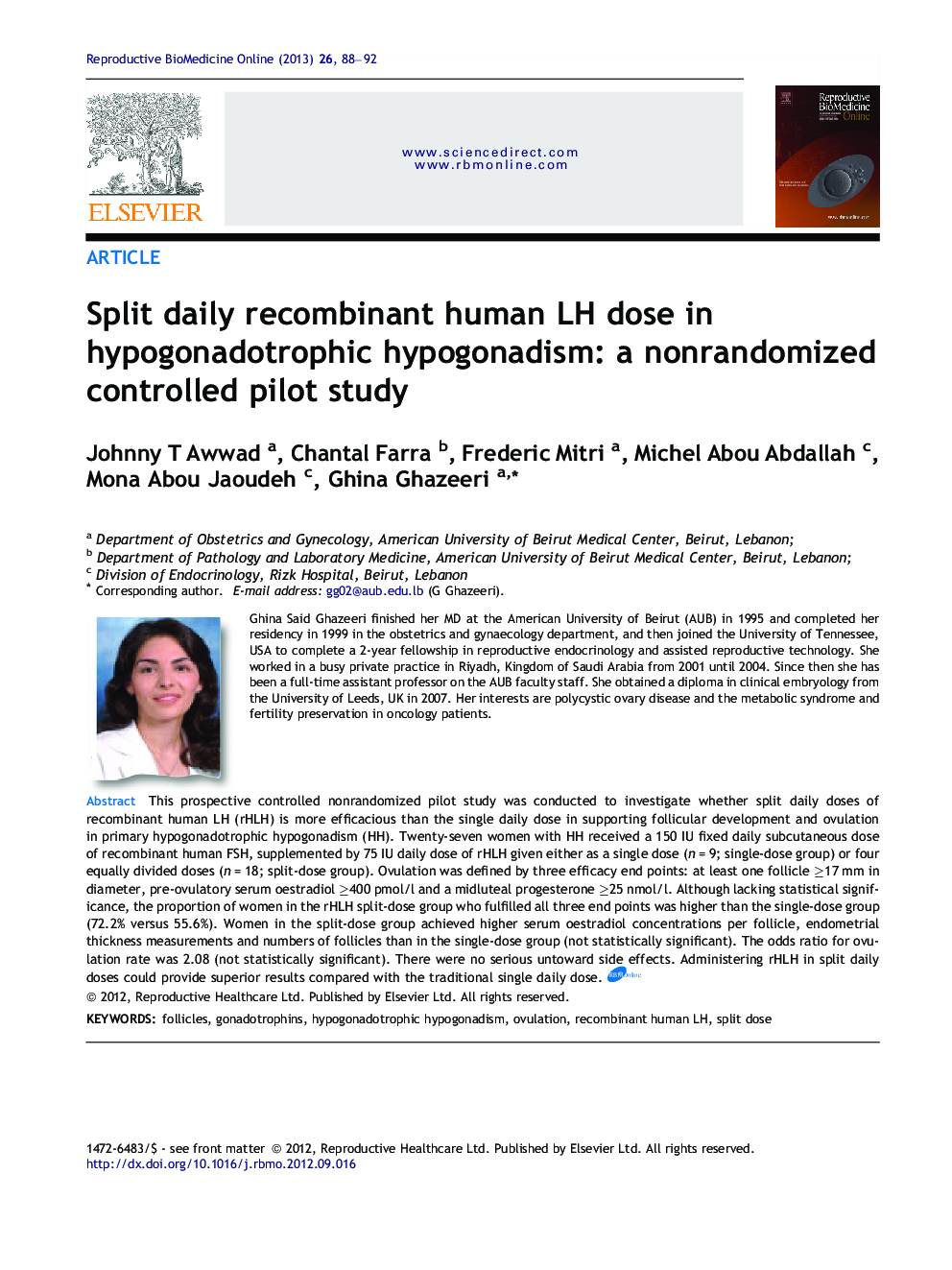| Article ID | Journal | Published Year | Pages | File Type |
|---|---|---|---|---|
| 3970609 | Reproductive BioMedicine Online | 2013 | 5 Pages |
This prospective controlled nonrandomized pilot study was conducted to investigate whether split daily doses of recombinant human LH (rHLH) is more efficacious than the single daily dose in supporting follicular development and ovulation in primary hypogonadotrophic hypogonadism (HH). Twenty-seven women with HH received a 150 IU fixed daily subcutaneous dose of recombinant human FSH, supplemented by 75 IU daily dose of rHLH given either as a single dose (n = 9; single-dose group) or four equally divided doses (n = 18; split-dose group). Ovulation was defined by three efficacy end points: at least one follicle ⩾17 mm in diameter, pre-ovulatory serum oestradiol ⩾400 pmol/l and a midluteal progesterone ⩾25 nmol/l. Although lacking statistical significance, the proportion of women in the rHLH split-dose group who fulfilled all three end points was higher than the single-dose group (72.2% versus 55.6%). Women in the split-dose group achieved higher serum oestradiol concentrations per follicle, endometrial thickness measurements and numbers of follicles than in the single-dose group (not statistically significant). The odds ratio for ovulation rate was 2.08 (not statistically significant). There were no serious untoward side effects. Administering rHLH in split daily doses could provide superior results compared with the traditional single daily dose.We conducted this clinical study to investigate whether a split daily dose protocol of recombinant human LH (rHLH) is more efficacious than the single daily dose in supporting follicular development and ovulation in primary hypogonadotrophic hypogonadism (HH). HH is an uncommon entity that can lead to very low or undetectable serum gonadotrophin concentrations. It manifests in anovulation, amenorrhoea and subsequent infertility. Twenty-seven women with HH received a 150 IU fixed daily subcutaneous dose of recombinant human FSH, supplemented by a 75 IU daily dose of rHLH given either as a single dose (n = 9; single-dose group) or four equally divided doses (n = 18; split-dose group). Ovulation was defined by these three efficacy end points: at least one follicle ⩾17 mm in mean diameter, pre-ovulatory serum oestradiol concentration ⩾400 pmol/l and a midluteal progesterone concentration ⩾25 nmol/l. The proportion of women in the rHLH split-dose group who fulfilled all three end points was higher than the single-dose group (72.2% versus 55.6%). Women in the split-dose group achieved higher serum oestradiol concentrations per follicle, endometrial thickness measurements and numbers of follicles than in the single-dose group, without statistical significance. Women who received the split-dose regimen were more likely to have ovulation than the other group. We had no serious problematic side effects. Our results suggest that administering rHLH in split daily doses could provide superior results compared to the traditional single daily dose.
